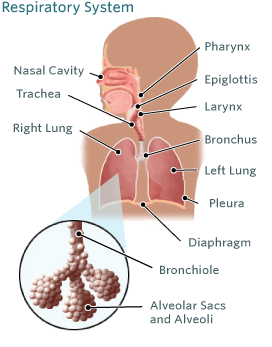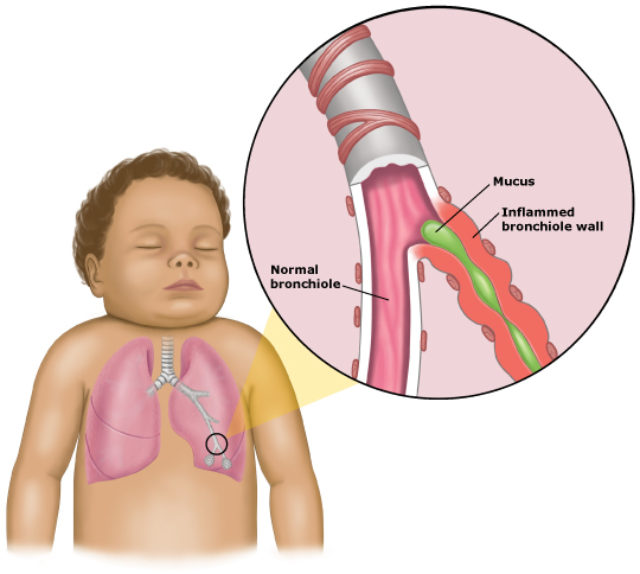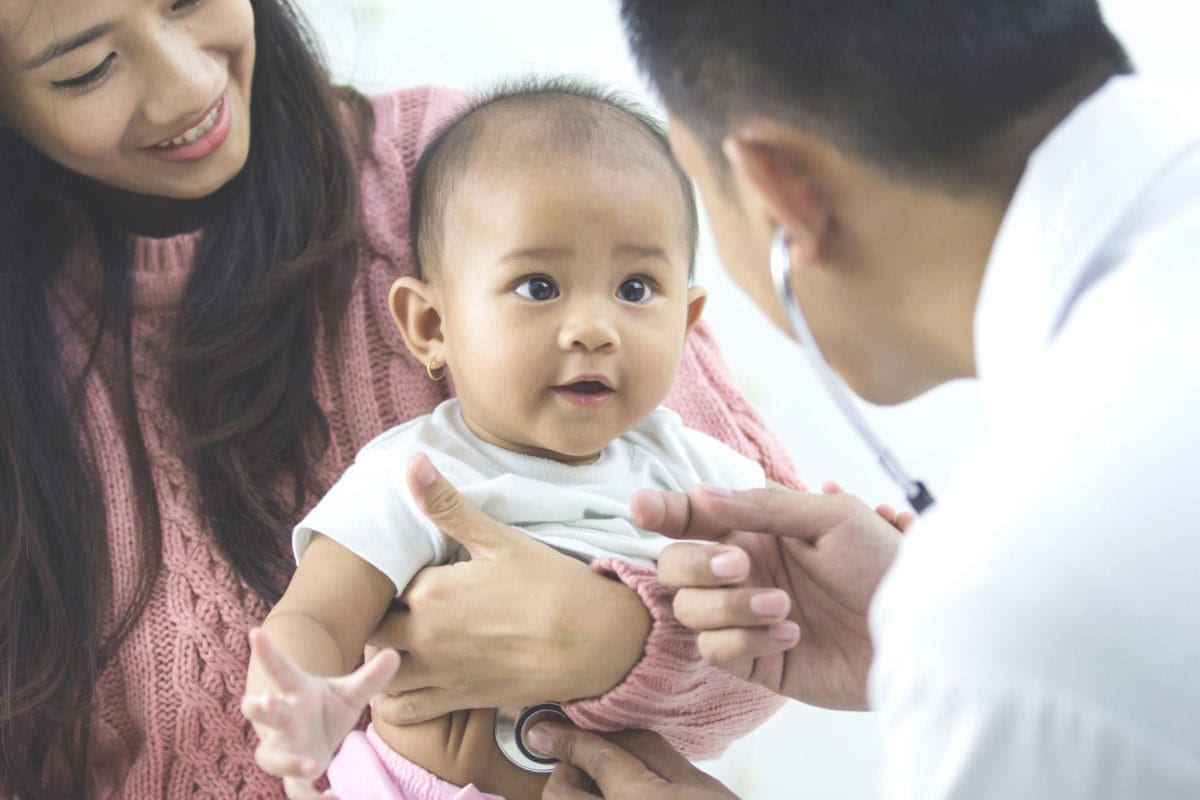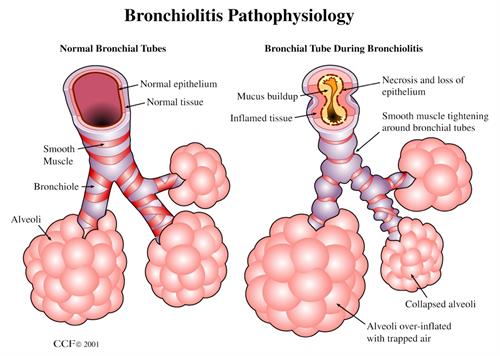Your Why does my baby keep getting bronchiolitis images are available in this site. Why does my baby keep getting bronchiolitis are a topic that is being searched for and liked by netizens today. You can Download the Why does my baby keep getting bronchiolitis files here. Download all free photos.
If you’re searching for why does my baby keep getting bronchiolitis pictures information connected with to the why does my baby keep getting bronchiolitis keyword, you have visit the ideal blog. Our site always provides you with hints for refferencing the highest quality video and image content, please kindly surf and find more informative video content and images that match your interests.
Why Does My Baby Keep Getting Bronchiolitis. Very few children require intensive care for bronchiolitis but there are two main reasons why they might need it. There are long pauses in your babys breathing. But it generally occurs in infants 3 to 9 months of age. In most cases RSV is no worse than a common cold.
 Bronchiolitis In Babies Causes Symptoms And Treatment Bronchitis Symptoms Asthma Kids Asthma In Toddlers
Bronchiolitis In Babies Causes Symptoms And Treatment Bronchitis Symptoms Asthma Kids Asthma In Toddlers
Bronchiolitis occurs when the smallest airways of the lungs called the bronchioles get infected becoming swollen and filled with mucus. Bronchiolitis is when the tiniest air passages in your babys lungs become swollen. How can I help prevent bronchiolitis in my child. This suction will draw the clogged mucus out of the nose. Your baby is having difficulty breathing. Wash your hands or use an alcohol-based hand cleaner before and after touching your child.
Squeeze the bulb first.
Most often affects infants and young children because their small airways can easily get blocked. This blocks the flow of air making it harder for a baby to breathe. Bronchiolitis is most common in babies younger than 12 months. Bronchiolitis is associated with an increased risk of chronic respiratory conditions including asthma but it is not known if it causes these conditions. Most often affects infants and young children because their small airways can easily get blocked. Your child may also need a palivizumab shot.

In most cases RSV is no worse than a common cold. You can help prevent the spread of bronchiolitis. Usually Bronchiolitis is caused by a virus called respiratory syncytial virus known as RSV. When bronchiolitis starts the symptoms look a bit like a cold. This suction will draw the clogged mucus out of the nose.

Most often affects infants and young children because their small airways can easily get blocked. One of the most common causes of bronchiolitis is an airborne virus called respiratory syncytial virus RSV. Wash your hands or use an alcohol-based hand cleaner before and after touching your child. Is most common during the first 2 years of life especially in very young babies. Is more common in premature babies children with lung or heart problems and kids with weak immune systems.

Bronchiolitis occurs when the smallest airways of the lungs called the bronchioles get infected becoming swollen and filled with mucus. This is usually necessary if they are not getting enough oxygen into their blood because theyre having difficulty breathing or if they are not eating or drinking enough. A few risk factors for viral bronchiolitis in babies and young children are. Is more common in premature babies children with lung or heart problems and kids with weak immune systems. Harding 2018 NHS 2018a.

Your child may also need a palivizumab shot. This works best when your baby is younger than 6 months. Gently put the rubber tip into one nostril and slowly release the bulb. Bronchiolitis is most common in babies younger than 12 months. A few risk factors for viral bronchiolitis in babies and young children are.

One of the most common causes of bronchiolitis is an airborne virus called respiratory syncytial virus RSV. Bronchiolitis is most common in babies younger than 12 months. Bacterial bronchitis is more common than viral bronchitis. Viral bronchiolitis affects children up to 2 years old. You can help prevent the spread of bronchiolitis.

This is caused by a viral or bacterial infection. Your child may also need a palivizumab shot. Viral bronchiolitis affects children up to 2 years old. How can I help prevent bronchiolitis in my child. A few risk factors for viral bronchiolitis in babies and young children are.

You can help prevent the spread of bronchiolitis. Bronchiolitis is associated with an increased risk of chronic respiratory conditions including asthma but it is not known if it causes these conditions. How can I help prevent bronchiolitis in my child. The guideline covers children with bronchiolitis but not those with other respiratory conditions such as recurrent viral induced wheeze or asthma. Children are more at risk of being admitted to hospital if they were born prematurely before.

This suction will draw the clogged mucus out of the nose. Usually Bronchiolitis is caused by a virus called respiratory syncytial virus known as RSV. Bronchiolitis is when the tiniest air passages in your babys lungs become swollen. In older children and adults RSV can cause a cough or cold. Is most common during the first 2 years of life especially in very young babies.

In older children and adults RSV can cause a cough or cold. Is more common in premature babies children with lung or heart problems and kids with weak immune systems. Usually Bronchiolitis is caused by a virus called respiratory syncytial virus known as RSV. In most cases RSV is no worse than a common cold. Bronchiolitis is most common in babies younger than 12 months.

Viral bronchiolitis affects children up to 2 years old. Your babys tongue or lips are blue. You can help prevent the spread of bronchiolitis. But it generally occurs in infants 3 to 9 months of age. Bronchiolitis is associated with an increased risk of chronic respiratory conditions including asthma but it is not known if it causes these conditions.
Your babys tongue or lips are blue. Bronchiolitis is when the tiniest air passages in your babys lungs become swollen. Your baby is having difficulty breathing. Your babys tongue or lips are blue. During RSV season these shots are.

Viral bronchiolitis affects children up to 2 years old. You can help prevent the spread of bronchiolitis. Bronchiolitis is caused by a virus known as the respiratory syncytial virus RSV which is spread through tiny droplets of liquid from the coughs or sneezes of someone whos infected. While your child has symptoms keep him or her away from other children. Almost all children will have had.

Viral bronchiolitis affects children up to 2 years old. When bronchiolitis starts the symptoms look a bit like a cold. This virus spreads through sneezing coughing or hand contact. Bronchitis is when the large airway passages that connect the windpipe to the lungs become inflamed. The first is if their oxygen saturations stay low or theyre developing severe breathing problems where the effort to breathe is exhausting them or if they.

Squeeze the bulb first. Bacterial bronchitis is more common than viral bronchitis. During RSV season these shots are. Bronchiolitis is when the tiniest air passages in your babys lungs become swollen. Is more common in premature babies children with lung or heart problems and kids with weak immune systems.

Harding 2018 NHS 2018a. This suction will draw the clogged mucus out of the nose. Bronchiolitis is caused by a virus known as the respiratory syncytial virus RSV which is spread through tiny droplets of liquid from the coughs or sneezes of someone whos infected. Your babys tongue or lips are blue. This is usually necessary if they are not getting enough oxygen into their blood because theyre having difficulty breathing or if they are not eating or drinking enough.

Bronchiolitis is caused by a virus known as the respiratory syncytial virus RSV which is spread through tiny droplets of liquid from the coughs or sneezes of someone whos infected. Bronchiolitis occurs when the smallest airways of the lungs called the bronchioles get infected becoming swollen and filled with mucus. Bronchiolitis is caused by a virus known as the respiratory syncytial virus RSV which is spread through tiny droplets of liquid from the coughs or sneezes of someone whos infected. Usually Bronchiolitis is caused by a virus called respiratory syncytial virus known as RSV. This can make it more difficult for your baby to breathe.

This suction will draw the clogged mucus out of the nose. This is usually necessary if they are not getting enough oxygen into their blood because theyre having difficulty breathing or if they are not eating or drinking enough. Your babys tongue or lips are blue. Wash your hands or use an alcohol-based hand cleaner before and after touching your child. Clear your babys nose with a suction bulb.

During RSV season these shots are. Bronchiolitis is associated with an increased risk of chronic respiratory conditions including asthma but it is not known if it causes these conditions. A few risk factors for viral bronchiolitis in babies and young children are. The first is if their oxygen saturations stay low or theyre developing severe breathing problems where the effort to breathe is exhausting them or if they. Almost all children will have had.
This site is an open community for users to submit their favorite wallpapers on the internet, all images or pictures in this website are for personal wallpaper use only, it is stricly prohibited to use this wallpaper for commercial purposes, if you are the author and find this image is shared without your permission, please kindly raise a DMCA report to Us.
If you find this site beneficial, please support us by sharing this posts to your preference social media accounts like Facebook, Instagram and so on or you can also bookmark this blog page with the title why does my baby keep getting bronchiolitis by using Ctrl + D for devices a laptop with a Windows operating system or Command + D for laptops with an Apple operating system. If you use a smartphone, you can also use the drawer menu of the browser you are using. Whether it’s a Windows, Mac, iOS or Android operating system, you will still be able to bookmark this website.









